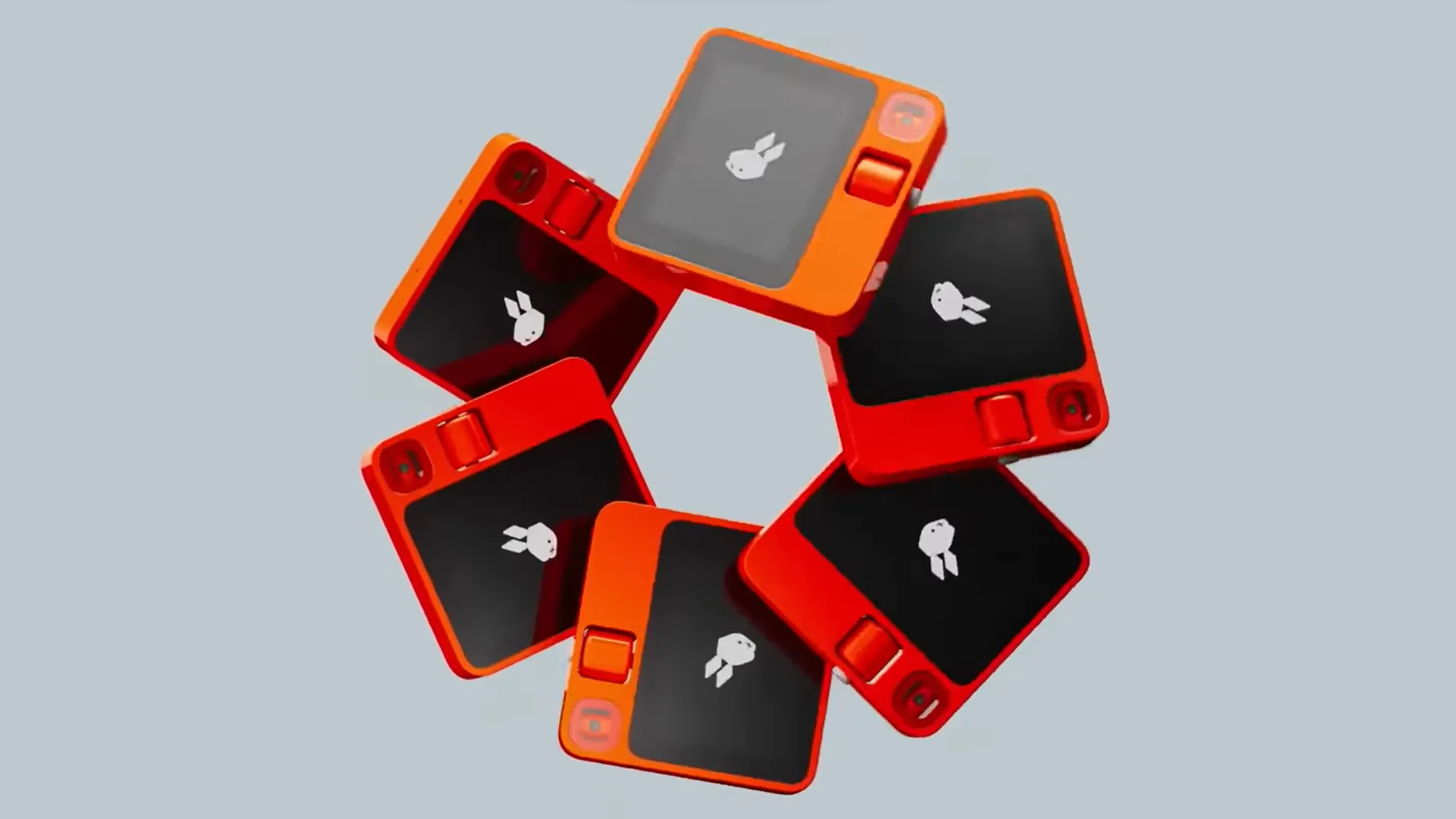The handheld AI assistant Rabbit R1 has landed in the hands of its earliest adopters, and its public reception carries an air of relief from fans of the nascent hardware category.
The emerging category of AI-powered personal assistants has few entrants, most prominent among them the much-maligned Humane AI Pin, which was panned for its sluggish performance and lack of real-world utility. In contrast, the R1 seems to have struck a pleasant chord.
The Rabbit R1 debuted at CES 2024, and offered a unique blend of modest hardware and an innovative software approach that merges large language models (LLMs) and a new technology dubbed Large Action Models that can manipulate other apps and ostensibly gives AI more practical skills.
The company hosted a live unboxing yesterday.
The device was pitched as a gateway to a computing future that moves beyond touch-based and app-based interactions—a vision that would require rapid responses to succeed. Lewis Hilsenteger of Unbox Therapy said “[the] Rabbit R1 it is actually quick. Like 1.5 to 2 seconds for most responses,” the team noted.
Hilsenteger described the device as "very fun to experiment with," and said he was impressed with its appearance, designed by Swedish electronics firm Teenage Engineering.
“What the hardware represents is an opportunity to get people excited in a new input method, which is no longer touch based and no longer app based,” he said.
Long-time tech reviewer Justine “iJustine” Ezarik is also a fan.
“Overall I’m impressed with this device and I think the R1 is really a standout product,” she said in her review. “It combines solid hardware with smart adaptive software and it’s really user-focused designed."
Ezarik expressed delight at the vision capabilities of the device and its ability to do some tasks like ordering an Uber or a Pizza from a local restaurant.
Similarly, Mark Spoonauer, global editor-in-chief at Tom’s Guide, suggested that the device could simplify tasks like summoning an Uber ride, making it more accessible for those who struggle with complicated graphic interfaces.
“The other potential market is those who are older,” he said in an interview with Techsploder. ”For example, my mom, if she needs an Uber ride somewhere, it would be much easier to just talk to a gadget and say come pick me up and take me to ‘blank’ without going through multiple screens in an app.”
The full Tom’s Guide’s review will be published next week.
Engadget reviewer Cherlynn Low said she was skeptical about AI devices but found the Rabbit R1 to be more accessible and fun than the Humane AI pin.
“Rabbit has already succeeded in making me feel like Alice entering Wonderland,” she said, while noting that most of its appeal comes from its seamless integration with third-party apps—something the Humane AI pin lacks at launch.
Matt Smith, another Engadget reviewer, highlighted the Rabbit R1's affordability compared to the Humane AI pin. The former costs less than a third of the latter and requires no monthly subscription fee.
Kyle Kucharski, Editor at ZDNet, doubled down on this idea, saying the R1 can be more appealing simply because of its affordability.
“The Rabbit, however, has a unique position with its modest $200 price point and lack of any sort of subscription fee, something that could make adoption far easier,” Kucharski wrote.
David Pierce from The Verge described the Rabbit R1 as "silly and fun," also drawing a contrast with the Humane AI pin, which he likened to a "carefully sculpted metal gem." Pierce was on board with Rabbit’s pitch that the R1 is in a brand new category of device.
“So far, this thing seems like it’s trying to be less like a smartphone killer and more like the beginnings of a useful companion,” Pierce said—but noted that the R1 “can’t send emails or make spreadsheets, though [Rabbit founder and CEO Jesse] Lyu has been demoing both for months.”
Riley Brown, a tech reviewer on Instagram and TikTok, was able to perform those tasks in his review.
rabbit r1
zero time cuts, only zooms
(audio of rabbit wasn't picked up well by my mic) pic.twitter.com/qZXqtymQPA— Riley Brown (@rileybrown_ai) April 24, 2024
Matt Wolfe, who specializes in AI product and service reviews on YouTube, honed in on the Rabbit R1’s Large Action Model.
“What really makes the R1 exciting is the teaching mode—it turns the device into a handheld AI agent,” Wolfe said. “You use a computer to show the R1 how to accomplish a task [and] once the Rabbit learns it, it can then complete that same task again in the future with just a voice prompt.”
After watching the @rabbit_hmi R1 launch party keynote, I'm actually pretty excited to get my hands on one. It was fun to watch @jessechenglyu generate images on MidJourney directly on the device. Taking audio or video notes and sending them straight to the "Rabbit Hole" seems… pic.twitter.com/54oLqZiihu
— Matt Wolfe (@mreflow) April 24, 2024
Marques Brownlee—whose critical review of the Humane AI Pin was given outsize credit for hurting the company—posted a photo of the device in his hand, and his followers are clearly eager to hear his thoughts weeks after he slammed the competition.
For his part, Rabbit CEO Lyu said he isn’t nervous about the wave of reviews coming his way. Last week, he uploaded a comparison video in which the R1 was faster than the Humane AI pin in all of the tasks that it was asked to perform.
Lyu even took a jab at the Humane AI pin at a recent conference.
“For sure we’re going to run into a bunch of bugs and issues, but we’re all here to fix them as fast as possible,” he said earlier this week. “But I don’t think MKBHD will say this is the worst device we’ve ever reviewed so far.”
Edited by Ryan Ozawa.





